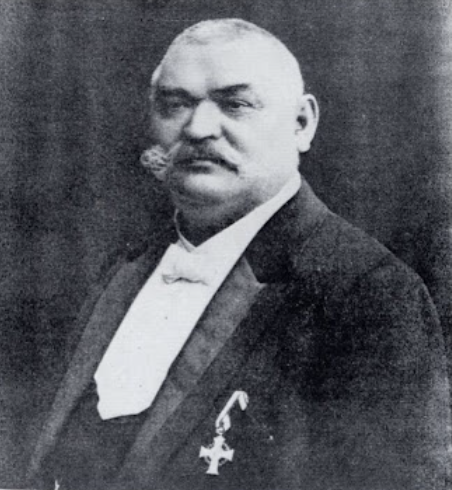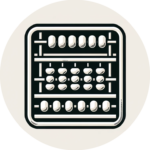BURKHARDT ARITHMOMETER, 1878
Inventor
Model derived from X. THOMAS DE COLMAR arithmometer
Invention date
Patent de 1878
Manufacturing date:
1878-1892 (n° 78251)
Manufacturing location
Germany
Manufacturer
Arthur BURKHARDT
Dimensions
L 60 H 11 W 20
Reference Number
165

History and Functionality
The arithmometer of Arthur BURCKHARDT (1857-1918) was the first German version built from the patent of Xavier THOMAS de COLMAR. It brings some functional enhancements:
- Ability to work with the machine tilted for easier use and easy access to the mechanisms through a hatch in the box for maintenance.
- More robustness and faster troubleshooting.
The arithmometer was first built in 1878. By 1892, five hundred machines were built. This arithmometer, like X. THOMAS de COLMAR’s, processes the multiplication by first setting the multiplicand on the setting mechanism. Then you have to deal with the figures of the multiplier one by one starting from the right and making as many turns of the crank as indicated by the figure of the multiplier. You then slide the movable carriage to the right by one position to process the following figure of the multiplier.
To achieve 325 X 26:
- Set 325 on the setting mechanism
- Actuate the crank 6 times
- Then shift the movable carriage to the right by one position
- Then you turn the crank twice
- The final result is displayed on the result mechanism.
In total, you have turned the crack 8 times (2+6).
About The Manufacturer
Arthur Burkhardt, a significant figure in the history of computing, made notable contributions in the late 19th and early 20th centuries with his invention, the Burkhardt Arithmometer. This device represented an important evolution in the field of mechanical calculators, building upon the foundations laid by earlier inventions such as the Thomas Arithmometer.
Introduced in the 1880s, the Burkhardt Arithmometer was designed to efficiently perform all four basic arithmetic operations: addition, subtraction, multiplication, and division. What set Burkhardt’s machine apart was its enhanced precision and reliability, as well as improvements in design that made it more user-friendly and robust for everyday use in offices and businesses.
The Burkhardt Arithmometer was notable for its sophisticated mechanism, which incorporated advancements in mechanical engineering to provide smoother and more accurate calculations. This made it a popular tool for commercial and scientific calculations, especially in an era where manual computation was the norm. Its ease of use and durability contributed to its widespread adoption and long production run.
The Burkhardt Arithmometer not only reflects the technological advancements of its time but also exemplifies the gradual shift from manual to mechanical and eventually to electronic forms of computation.

